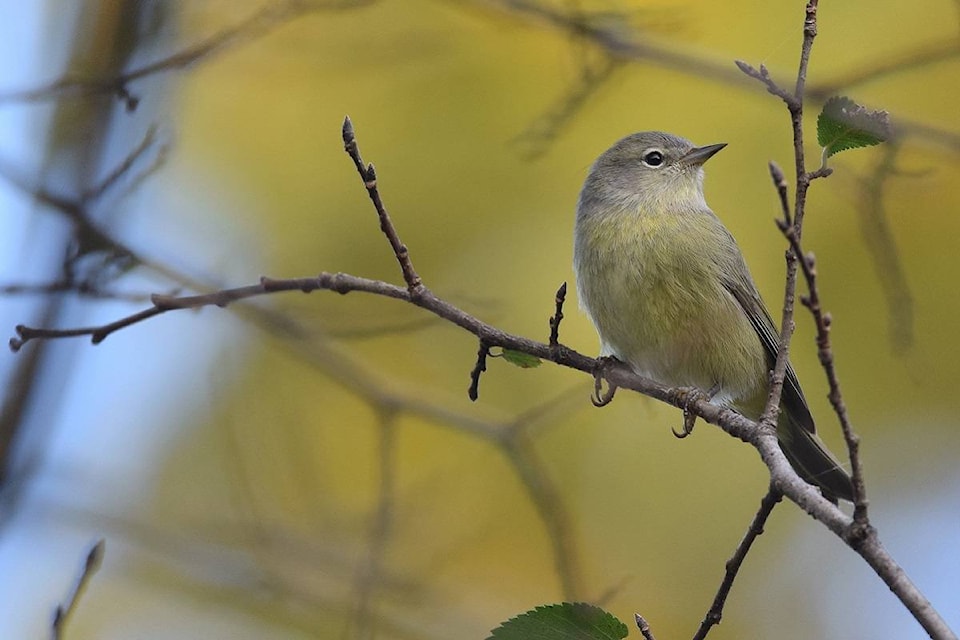by Margo Hearne
Distance doesn’t seem to deter migrating birds; they travel from one part of the world to another as though there was no tomorrow. For many birds, there is none. It is the only choice they have if they want their lineage to survive to the next generation - so it’s all about tomorrow. If they leave their wintering grounds to go north, they will have more food and less competition for territory than if they stayed in southern California. The understanding is that by leaving they go to a place where there is more food, therefore better chances for survival. Birds are going everywhere all the time.
Trying to find the birds that are going everywhere is another matter. Since the imperative to reproduce is not so strong, migrant fall warblers don’t pronounce themselves as visibly as they do in spring. Then they are singing from high trees, showing their bright colours from low bushes and skipping from tuft to tuft in tall grass meadows. In fall, however, they stay as hidden as possible and are almost impossible to see. Just this past week we could hear light chirps from the deep brush and knew there were warblers somewhere, but where? Were they to the left or right; high or low; anywhere at all and the calls were someone’s radio miles away? On quiet mornings, sounds carry. It’s a waiting game. Songbirds don’t always respond to coaxing calls after the nesting season; they know the chicks have hatched and gone, so making noises pretending to be a hungry chick simply doesn’t impress them. They either go deeper into the brush or go completely quiet. Then a branch twitches - there’s something there. A yellow bird. Bright yellow, light yellow, yellowy-grey, greeny-yellow? Well, yellow for sure. Definitely an Orange-crowned Warbler. They nest here so are to be expected. Then a Townsend’s Warbler hops up speedily; it’s bright black-and-yellow face is clearly visible. But what’s that other one? Has it a white eye-ring? Yes. It’s not very colourful and quite small and has a vibrant way of feeding. A rare Ruby-crowned Kinglet. Things are looking up. These tiny kinglets usually travel on their own and are one of the smallest songbirds and have a distinctive way of darting up and down quickly through the underbrush. They are about the same size as the more common Golden-crowned Kinglets that have just appeared, possibly a family group, calling from one to another.
READ MORE: On the Wing: Pocket Birding and Being Insignificant
The lovely morning passes. A Pacific-slope Flycatcher appears for a second and is gone. Then a definitely yellow bird. What is it? A Wilson’s Warbler! Bright and cute and colourful. Chestnut-backed Chickadees fly low over the open, a flock of Dark-eyed Juncos appear on a low spruce and an eagle calls from the distance. Its time to leave the birds to their own errands and be on our way. It was an interesting, educational morning and its good to know that we are not alone in trying to identify small yellow flying things; even the Cornell Laboratory of Ornithology admits that it’s the season of confusing warblers “after spending summer wearing brilliant colours, several warbler species molt into confusingly similar patterns.” They are so right.
